New York, NY - Jul 14 2011
Using a new, cutting-edge technology for gene sequencing, researchers funded in part by the Parkinson’s Disease Foundation (PDF), have discovered a new gene called vesicular sorting protein complex 35 (VPS35) that is linked to Parkinson’s disease (PD) in people with familial PD. The results appear in the July 14 issue of the
American Journal of Human Genetics.
In recent years, researchers have identified about a dozen genes that either cause PD or increase the risk of developing the disease. In general, the motor symptoms of PD begin at a young age in people who have mutations in genes that cause PD. People with mutations in the newly discovered gene, however, were diagnosed with PD around the age of 50.
To search for a new PD gene, an international team of researchers led by Carles Vilariño-Güell, Ph.D., and Matthew J. Farrer, Ph.D., at the University of British Columbia, Vancouver, focused on a family from Switzerland in which 11 people in three generations were diagnosed with PD. They compared the DNA of family members with PD to that of unaffected family members to search for differences that could explain why some developed PD and others did not.
In the past, this type of DNA analysis has been very difficult, requiring examination and DNA collection from large numbers of affected families. The University of British Columbia researchers instead used a new and efficient technique called whole exome sequencing, which focuses on small, but important, sentence-like sections of DNA. These sections govern the production of proteins. Since mutated proteins are most often the cause of genetic diseases, they reasoned that mutations linked to inherited PD would be found here.
Results
- In all 11 members of the Swiss family who had PD, the scientists identified a mutation in the VPS35 gene.
- Among 190 additional families that had many cases of PD, the researchers found the same VPS35 mutation in eight members of three families from the United States, Tunisia, and Israel (Yemenite Jews).
- The VPS35 mutation was found in one person with no family history of PD.
- The researchers tested DNA samples from more than 3,000 healthy individuals from several countries and found no mutations in VPS35.
What Does it Mean?
Like most other genetic causes of PD, this newly identified genetic mutation is exceedingly rare, resulting in very few cases of PD. However, these rare mutations have helped scientists generate key insights into the disease and a broad understanding of why people may develop PD. This new study is the first to implicate VPS35 in PD. Consequently, these results will need to be replicated in other populations in order to confirm this finding and assess the frequency of this mutation.
Nevertheless, VPS35 is already known to play a role in disease. The gene plays a central role in a neuron’s protein recycling center as part of the so-called retromer system. Breakdowns in the retromer pathway have already been linked to neurodegenerative diseases such as Alzheimer’s and Charcot-Marie-Tooth, the latter is a disease of the peripheral motor and sensory nerves. Therefore, a better understanding of how a VPS35 mutation causes cellular processes to go awry may help scientists unravel the causes of PD and other neurodegenerative diseases.
Reference: Carles Vilariño-Güell, Christian Wider, Owen A. Ross, Justus C. Dachsel, Jennifer M. Kachergus, Sarah J. Lincoln, Alexandra I. Soto-Ortolaza, Stephanie A. Cobb, Greggory J. Wilhoite, Justin A. Bacon, Bahareh Behrouz, Heather L. Melrose, Emna Hentati, Andreas Puschmann, Daniel M. Evans, Elizabeth Conibear, Wyeth W. Wasserman, Jan O. Aasly, Pierre R. Burkhard, Ruth Djaldetti, Joseph Ghika, Faycal Hentati, Anna Krygowska-Wajs, Tim Lynch, Eldad Melamed, Alex Rajput, Ali H. Rajput, Alessandra Solida, Ruey-Meei Wu, Ryan J. Uitti, Zbigniew K. Wszolek, François Vingerhoets, Matthew J. Farrer. VPS35 Mutations in Parkinson Disease.
The American Journal of Human Genetics - 15 July 2011 (Vol. 89, Issue 1, pp. 162-167).
www.cell.com/AJHG/abstract/S0002-9297(11)00242-4
Source Date: Jul 15 2011
 These figures are just about higher than those in the U.S.A., which has one of the highest prevalence rates of any country. The only countries with higher prevalence rates than Canada are Albania and Egypt, where the prevalence rates are exceptionally high. The ratio of men to women with Parkinson's Disease in Canada is 1.56. As in most countries in the world, in Canada there are more men than women with Parkinson's Disease.
These figures are just about higher than those in the U.S.A., which has one of the highest prevalence rates of any country. The only countries with higher prevalence rates than Canada are Albania and Egypt, where the prevalence rates are exceptionally high. The ratio of men to women with Parkinson's Disease in Canada is 1.56. As in most countries in the world, in Canada there are more men than women with Parkinson's Disease.
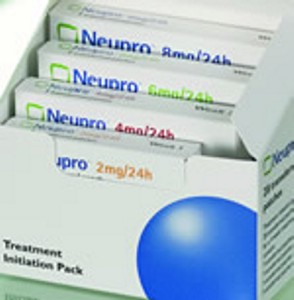 For most adverse events no age-related differences in were observed. In early Parkinson's Disease those symptoms more common in those younger than 65 in comparison to those who were 65 were : nausea (38% v 30%) and headache (15% v 9%). In another study, amongst older patients, those symptoms more common in those younger than 75 in comparison to those who were 75 were : nausea (36% v 21%), and dizziness (15% v 28%). In people with advanced Parkinson's Disease it was still the younger patients that more commonly had nausea (24% v 19%). It was only falls that were more common in older patients (13% v 8%). So oddly, the adverse events of this dopamine agonists were generally less rather than greater with age, as if the adverse events were adapted to.
For most adverse events no age-related differences in were observed. In early Parkinson's Disease those symptoms more common in those younger than 65 in comparison to those who were 65 were : nausea (38% v 30%) and headache (15% v 9%). In another study, amongst older patients, those symptoms more common in those younger than 75 in comparison to those who were 75 were : nausea (36% v 21%), and dizziness (15% v 28%). In people with advanced Parkinson's Disease it was still the younger patients that more commonly had nausea (24% v 19%). It was only falls that were more common in older patients (13% v 8%). So oddly, the adverse events of this dopamine agonists were generally less rather than greater with age, as if the adverse events were adapted to. Players in the NFL (
Players in the NFL ( The first clinical trial for the development of a
Parkinson’s Disease vaccine has been started by AFFiRiS AG. The vaccine called
PD01A is directed against alpha-Synuclein, a protein considered by AFFiRis to
cause the onset and progression of Parkinson's Disease. The vaccination
aims to educate the immune system to generate antibodies directed against
alpha-Synuclein. They believe that a reduction of the brain’s
alpha-Synuclein aggregates will have a beneficial impact on the progress of
Parkinson's Disease. PD01A aims to accomplish that by the induction of
antibodies that are targeting alpha-Synuclein, in order to neutralize its toxic
impact.
The first clinical trial for the development of a
Parkinson’s Disease vaccine has been started by AFFiRiS AG. The vaccine called
PD01A is directed against alpha-Synuclein, a protein considered by AFFiRis to
cause the onset and progression of Parkinson's Disease. The vaccination
aims to educate the immune system to generate antibodies directed against
alpha-Synuclein. They believe that a reduction of the brain’s
alpha-Synuclein aggregates will have a beneficial impact on the progress of
Parkinson's Disease. PD01A aims to accomplish that by the induction of
antibodies that are targeting alpha-Synuclein, in order to neutralize its toxic
impact. 

 People who have Parkinson's Disease and dementia were assessed for their resistance to insulin. When insulin is produced in order to prevent high blood glucose levels, insulin sometimes does not have affect. This can be due to insulin resistance, which is the inability of insulin to stimulate the insulin receptors. Brain function largely requires glucose in order to function. Nearly two thirds (62%) of people with Parkinson's Disease who had dementia were found to have insulin resistance. 30% of them also had impaired glucose tolerance. These percentages were significantly higher when the disease duration was longer and when the movement disability was worse. So dementia in Parkinson's Disease appears to be affected by the inability to make use of glucose rather than be a direct result of Parkinson's Disease.
People who have Parkinson's Disease and dementia were assessed for their resistance to insulin. When insulin is produced in order to prevent high blood glucose levels, insulin sometimes does not have affect. This can be due to insulin resistance, which is the inability of insulin to stimulate the insulin receptors. Brain function largely requires glucose in order to function. Nearly two thirds (62%) of people with Parkinson's Disease who had dementia were found to have insulin resistance. 30% of them also had impaired glucose tolerance. These percentages were significantly higher when the disease duration was longer and when the movement disability was worse. So dementia in Parkinson's Disease appears to be affected by the inability to make use of glucose rather than be a direct result of Parkinson's Disease. 
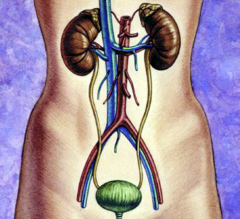
 The former
The former  CVT-301 uses the ARCUS inhalation technology, which delivers a reliable and consistent drug dose with a compact, breath actuated inhaler. It uses a proprietary dry powder and inhaler combination that is unique in its ability to deliver a large, precise dose independent of inspiratory flow rate from a simple, easy-to-use device suitable for convenient self-administration. The platform has successfully delivered more than one million doses to patients incorporating active agents ranging from small molecules to large proteins.
CVT-301 uses the ARCUS inhalation technology, which delivers a reliable and consistent drug dose with a compact, breath actuated inhaler. It uses a proprietary dry powder and inhaler combination that is unique in its ability to deliver a large, precise dose independent of inspiratory flow rate from a simple, easy-to-use device suitable for convenient self-administration. The platform has successfully delivered more than one million doses to patients incorporating active agents ranging from small molecules to large proteins.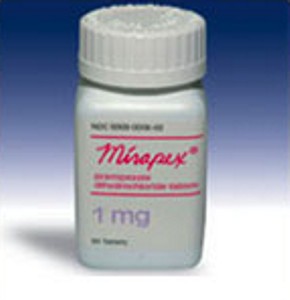

 Jansher Khan, who is arguably the world's best ever squash player has been diagnosed with Parkinson's Disease at the age of 42, following a series of tests.
Jansher Khan, who is arguably the world's best ever squash player has been diagnosed with Parkinson's Disease at the age of 42, following a series of tests. 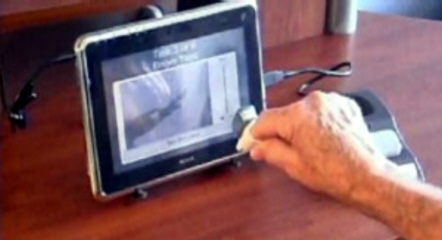 Parkinson’s Disease Rating Scale tests. The tablet gives reminders to take the test several times a day. It measures tremors and, with a built-in camera, records videos of patients whilst taking the test. Patients can keep a diary of their symptoms on the tablet. Via a Web portal, physicians get a report from the system showing the types of tremors and the time of day of each test. Users can also watch videos of the tremors.
Parkinson’s Disease Rating Scale tests. The tablet gives reminders to take the test several times a day. It measures tremors and, with a built-in camera, records videos of patients whilst taking the test. Patients can keep a diary of their symptoms on the tablet. Via a Web portal, physicians get a report from the system showing the types of tremors and the time of day of each test. Users can also watch videos of the tremors. 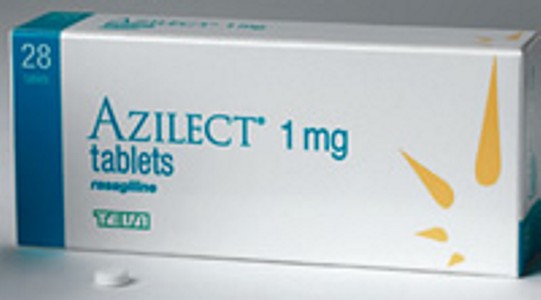 In fifteen previous studies Rasagiline caused a moderate reduction in symptoms. It caused a moderate reduction in "off" time in four of those studies. The treatment effect was still evident six weeks after drug discontinuation. One of those studies found Rasagiline to be more effective than Selegiline, which is another MAO-B inhibitor. However, these studies did not demonstrate any slowing of Parkinson's Disease progression. Rasagiline caused infrequent cardiovascular or psychiatric side effects.
In fifteen previous studies Rasagiline caused a moderate reduction in symptoms. It caused a moderate reduction in "off" time in four of those studies. The treatment effect was still evident six weeks after drug discontinuation. One of those studies found Rasagiline to be more effective than Selegiline, which is another MAO-B inhibitor. However, these studies did not demonstrate any slowing of Parkinson's Disease progression. Rasagiline caused infrequent cardiovascular or psychiatric side effects. 